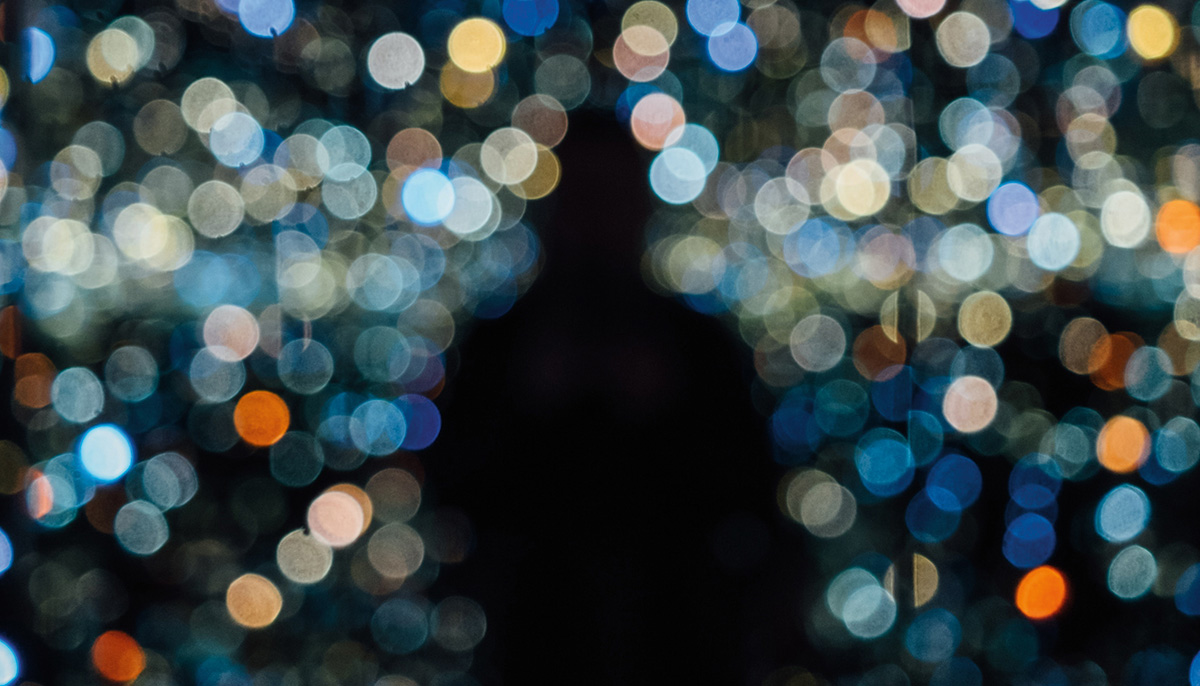The Mahayana vision can be ornate. Worlds upon worlds appear, each with bejeweled pagodas, within each pagoda a buddha (often the same buddha appearing simultaneously in each pagoda in each world), flowers raining down, delicate scents, beautiful sounds, magical beings; lengthy hagiographic descriptions of these beings; pages of praise of Buddhas and bodhisattvas so over the top that Yawheh herself would blush to be addressed that way. When I first stumbled into this literature, it seemed impossible to relate to. What did this complex cosmology have to do with, you know, Buddhist practice? Not being a fan of adjectives, I still find it difficult to actually read, for example, the three very large pages of relatively small type used to describe Queen Maya in the final chapter of the Avatamsaka Sutra in Thomas Cleary’s excellent translation. But I have come to deeply appreciate the generous, all-embracing quality of the Mahayana vision. Some of us encounter this vision through living traditions, such as Hua Yen, which draw much of their teachings from it (I recommend Tony Prince’s Universal Enlightenment as an excellent introduction to Hua Yen). And others—I am one—encounter it through traditions that touch it lightly and keep their focus elsewhere. Either way, I want to convince you that this is worth your attention.
Without knowing what it was, I stumbled into this vision when my husband and I were writing our wedding vows forty years ago, early in our practice. We wanted our vows to be not to each other, but together to this world, and found a paragraph in our Kwan Um School of Zen’s morning bell chant that fit:
Vowing openly with all world beings,
Entering together Buddha’s ocean of great vows,
Continuing forever to save sentient beings,
You and I simultaneously attain the way of Buddha.
I can’t speak for my husband, but it was the phrase “You and I simultaneously attain the way of Buddha” that caught my attention—how cool, how romantic, even better than the end of the movie The Robe, when the about-to-be-martyred Christian couple faces the lions together. Which is proof that I didn’t understand a thing.
Decades later, my husband, Stanley Lombardo, did a literal interlinear (that is, word-for-word) translation of our chants and, unlike the version above where the subject of the sentence is the plural “you and I”, it turns out that there is no I in that sentence—and no you, either. Instead, turning the interlinear version into grammatical English, all the many beings throughout the dharma world vow together to enter Amida Buddha’s great vow ocean, exhausting the very fabric of time to liberate all beings who mutually (“self other”) at the same instant attain the buddha way.
It’s not two people. It’s not even all people. It’s all beings, together, at once, simultaneously, liberating and being liberated—how else could it be? And this vast vision, unlike many cosmic visions that can leave us feeling small and even useless, makes each being key to the whole—we are all part of this process, we are all needed.
I want to be very clear here. I am not talking about Mahayana philosophy, with its disparate philosophical schools (and philosophical subschools and subsubschools) such as Madhyamaka and Yogacara. Nor am I talking about the proliferation of Mahayana schools of practice: Hua Yen, Tientai, Pure Land, Chan, Vajrayana, and so on, and the resultant proliferation of subschools and subsubschools of practice. Instead, I am talking about an overarching set of imagery and rhetorical strategies. These images and strategies are not present in all Mahayana writings—the Mahayana canon includes austere sutras such as the Diamond Sutra and the Lankavatara Sutra, meticulous philosophical analyses, and the terse, earthy Chan canon, where only the barest traces of this vision appear.
In this world, one being can manifest in many places at once, and worlds appear within worlds and beyond worlds.
But even where only a trace appears, this vision is a steady background for all of the Mahayana. It is a background that, like many so-called Western Buddhists, I essentially ignored for decades. But recently I find myself turning to it for moral guidance, and for a sense of reality more real than the usual reality we think we live in.
The essence of this vision is a universe in which time and space are flexible, and in which beings are neither separate nor dissolved in each other. In this world, one being can manifest in many places at once, thousands of beings can appear in a small space, and worlds appear within worlds and beyond worlds—Amida’s western pure land is not west of India or China, it is west of our universe.
The most famous manifestation of this vision is Indra’s net. I think of Indra’s net as not just two- or three- or four-dimensional, but infinitely dimensional. At every node in this net there is a precious jewel, and each jewel is different from every other jewel. They are not clones of each other, but whatever affects one jewel affects all of them. Each jewel sends its reflected light back to every other jewel. Each being in the universe is a precious jewel in Indra’s net. Each of our actions is a jewel; each thing done to us is a jewel. Indra’s net encompasses everything. Kind deeds and evil deeds coexist in this net—this is the part we like to pretend isn’t there, but just look at the world as it is and you can see that this is true. Nothing is left out—not the things we like and not the things we don’t like. Reality is vast and transcendent, excluding no one, connecting everyone, as intimately as the fingers on a hand are connected.
Indra’s net is an image. It makes no claims to literal truth. But it has extraordinary power. Codependent origination, dependent co-origination, interbeing, whatever you want to call it, is an abstraction. But Indra’s net gets the point across. If we all lived with the consciousness of the underlying reality that Indra’s net points to, our world would look very different.
It is easy to take some of this imagery and see it as somehow anticipating modern physics—what else is Buddhist cosmology but a multiverse in which universes are constantly interpenetrating each other? But that isn’t the point. When a lesser bodhisattva suddenly manifests from twelve million countries below the one we inhabit (this happens in the forty-second case of a fairly austere Chan text, the Mumonkan), what are we to make of it? Open the Lotus Sutra at random (I just did) and you are likely to find something like this: “Then the kings of the Brahma heavens from five million billion lands, together with their palaces, each taking a robe filled with heavenly flowers…” Or, early in the Avatamsaka Sutra, in a relatively restrained passage, we read that “The infinite scenes of the Buddha’s miraculous displays / Appear in all places in a single instant.” The Lankavatara Sutra begins with Ravana, the ten-headed king of the yakshas, seeing himself, the Buddha, and the sage Mahamati simultaneously appearing on jewel-covered peaks in every direction along with their cities, groves, and forests (and, full disclosure, realizing that all of this is only—only!—the perceptions of his mind).
This is not the half, the tenth, the .01 percent of it. Whether or not you believe the details, the message is clear: the world we know is a small part of a vast universe in which creatures of different realms mix freely, and all beings have not only the possibility of buddhahood but the nature of buddhahood baked into their essential being.
This is, of course, classic Buddhist doctrine, but it is not only expressed as doctrine. It is manifest in the imagery, and it’s inherent in the narrative structure of the sutras themselves. The narrative structure of the sutras makes it clear that buddhanature is shared and that realization is available to all. It accomplishes this by a very simple trick: Buddha is not the only being who speaks dharma.
Before I ever read any sutras, I had the impresssion that a Buddhist sutra was a (purported?) record of the Buddha’s speech, sort of like lecture notes. As it turns out, this is not necessarily the case. In some sutras, the Buddha speaks a lot, in others a little, in at least one (the Avatamsaka Sutra), essentially not at all. There are extended dialogues—with Subhuti in the Diamond Sutra, with Mahamati in the Lankavatara Sutra—in which much of the teaching is either expounded (Subhuti) or structured (Mahamati) by the student (it’s as if Mahamati gave the Buddha a course outline and the Buddha filled in details). Most of The Lion’s Roar of Queen Srimala is spoken by the queen herself, with only a few approving comments by the Buddha extending what she said. The Vimalakirti Sutra, among its main plot and subplots, has many scenes in which the Buddha does not take part. In the Avatamsaka Sutra, the text is spoken by various bodhisattvas, one after another, who are silently empowered by Vairocana, the buddha of infinite space and time, whose body is coterminous with the universe, the historical buddha Shakyamuni, and all other buddhas.
Unlike many cosmic visions that can leave us feeling small and even useless, this vast vision makes each being key to the whole.
The overall message is clear: sentient beings can be trusted. They have capacity. They can figure it out. They can teach others. In case this message is not clear, the Buddha is constantly praising his students—So it is! Well done! Exactly so!—and predicting great futures for them as buddhas in their own right, with their own pure lands; this is especially prominent in the Lotus Sutra, starting with close disciples and extending to more and more beings.
And what does it mean to be a buddha? It is not simply about attaining your own blessed blissed-out state. It is about establishing a refuge in which others can become liberated—that’s what those pure lands are about. We are back to where we started: all the many beings throughout the dharma world vow together to enter the great vow ocean, exhausting the very fabric of time to liberate all beings who mutually (“self other”) at the same instant attain the Buddha way.
Times are always difficult, and these times seem exceptionally so. Great masses of refugees across the planet, civil wars, genocide, severe repression of ethnic minorities, xenophobia, epidemic/pandemic disease—these things that are always with us seem to be with us more universally and with more instances of great severity, while the near certainty of climate change’s attendant disasters looms over us. The generosity and trust of the Mahayana vision offers a perspective that allows us to be clear-eyed without panicking, our actions not limited by shortsighted notions of a self desperately trying to preserve its individual prerogatives. We are not the whole. We are part of the whole. Our own liberation is bound up with the liberation of all. And liberation is the destiny of all.

